<>Blanc-Labo S.A. your laboratory equipment specialist
Type of products

Spatula, polyamide
Made of polyamide (PA), reinforced glass fiber
More info

Porcelain spatula with spoon
Made of porcelain withstands temperatures up to 1150 ºC. Glazed
More info

Spatula, polypropylene
Made of PP, autoclavable
More info

Spatula with wooden handle
Blade made of stainless steel
More info
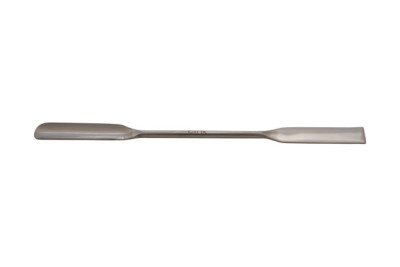
Grooved spatula Premium Line
Made of stainless steel grade 304. Autoclavable
More info
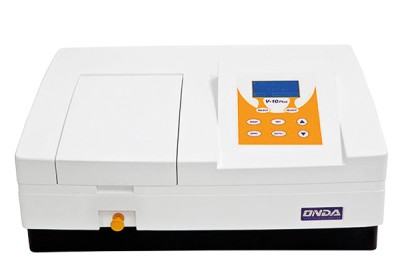
Spectrophotometer, visible, ONDA V-10 PLUS
For education, general use and routine analysis. Components that guarantee an excellent performance. Wavelength lecture directly on the screen. Auto zero and blank. Measurement of absorbance, transmittance and concentration. Quantitative: standard curve and coefficient methods. Pre-aligned lamp design, which ensures an easy exchange by the user. Includes software to extend the applications to the curve and standard kinetics. LCD screen (128 x 64 pixels). Sheath. Trackable Standard DAkkS Certificate.Wavelength range: 325 - 1000 nm. Bandwidth: 4 nm. Optical system: single beam. Grid: 1200 lines/mm. Wavelength accuracy: ± 2 nm. Repeatability: ± 1 nm. Resolution: 0,5 nm. Photometric mode: %T, Abs, Conc and Factor. Detector: silicon photodiode. Standard cell holder for 4 square 10 mm cells (4 optical glass cells included). Light source: tungsten. Lamp lifespan: 2000 hours approx. USB port (for PC remote control) and parallel port (for direct printing). Optional: professional software for data exportation to spreadsheet, color intensity analysis and tonality according to specific methods for OIV-MA-AS2-07B wines (SPTR-A01-001). Weight: 8 kg. Dimensions (mm): 440 x 360 x 180. 85-265 V / 50-60 Hz. Warranty 2 years. Delivery time 3 weeks. See the spare parts available for this spectrophotometer and the data sheet on our website: www.labbox.com.
More info

Antifog spray
Reduces fogging, acts as an antistatic avoiding attracting dust and cleans by completely removing traces of dirt, sweat and grease. For all types of lenses except with water-repellent treatment. 12 h effect
More info

Spray dryers
SPRAY DRYING: Spray drying is a method used to transform a liquid into a dry powder. It works by spraying the liquid into fine droplets in a warm chamber. The hot air in the chamber evaporates the water from the droplets, leaving behind tiny particles of powder. This technique is commonly used to make products such as powdered milk, instant coffee, powdered medicines, and food flavorings. It is popular because it produces high-quality powders that are easy to store and use.
More info
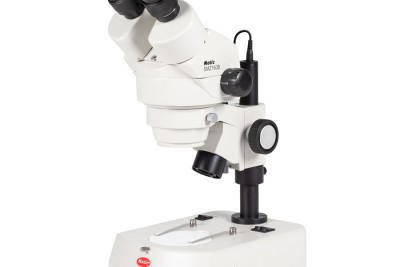
Stereomicroscope, MOTIC SMZ-160 series
Greenough zoom optical system. Binocular or trinocular head (according to model) 45º inclined and 360º rotating. Widefield WF10X/20 mm eyepieces. Zoom ratio 6:1 and magnification range 0,75X-4,5X. 100 mm working distance. R2LED: base stand with pole and head holder and incident and transmitted illumination. Incident LED 3W illumination with intensity control. Dust cover included. Supply 220-240 V (CE). 5 years warranty on optical and mechanical components. Delivery time 2-3 weeks
More info

Stereomicroscope, MOTIC ST-30C series
Binocular head 45º inclined. Widefield WF10X/20mm eyepieces. Turret-type magnification changer with 2X and 4X objectives. Incident and transmitted (according to model) tungsten 12V/10W or LED 20 mA, 3.5V, 70 mW illumination. Dust cover included. Supply 220-240 V (CE). 5 years warranty on optical and mechanical components. Delivery time 2-3 weeks
More info
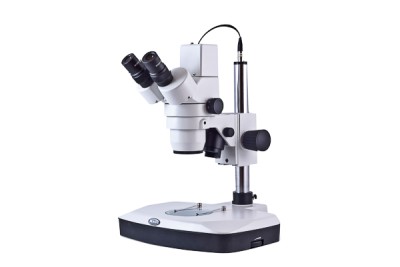
Digital stereomicroscope, MOTIC DM-143-FBGG series
Greenough zoom optical system. Binocular head 45º inclined with built-in digital camera CMOS 1/2” 5mp (2592 x 1944) with USB 2.0 output. Widefield WF10X/20 mm eyepieces. Zoom ratio 4:1 and magnification range 1X-4X. 80 mm working distance. FBGG: pole type stand with large working base. Coarse focusing system with tension adjustment. Incident and transmitted halogen 12V/10W illumination with intensity control. Dust cover and calibration slide included Motic Images Plus 3.0 Software for PC and Mac. Universal supply 100-240 V (CE). 5 years warranty on optical and mechanical components. Delivery time 2-3 weeks
More info
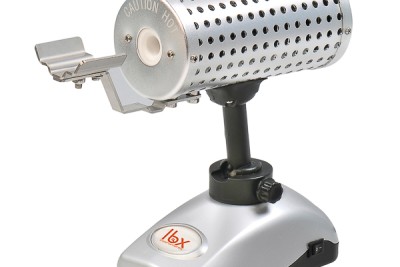
Electric sterilizer, S850
Designed for sterilization of laboratory equipment like needles, tweezers and other small items at high temperatures and short sterilization time (5-7 seconds). Can also be used at lower temperatures and long sterilization time to prevent contamination. Temperature range: RT 20-850ºC. Maximum diameter of objects to sterilize: 15 mm. Adjustable angle: 45-75º. Dimensions (L x W x H): 210 x 90 x 170 mm. 220 V / 50-60 Hz. Warranty 1 year
More info
Products 997 to 1008 on 1152 results
